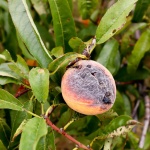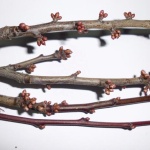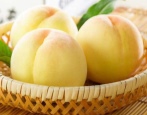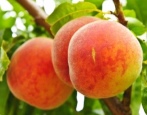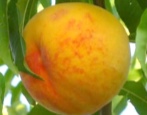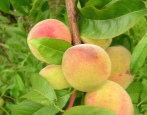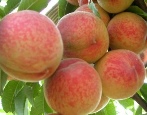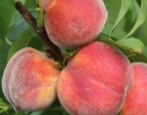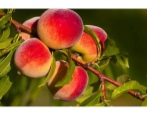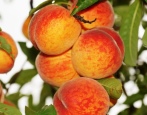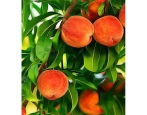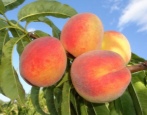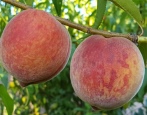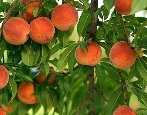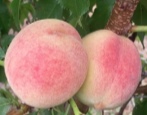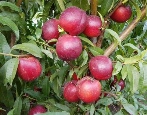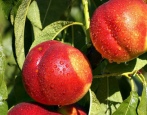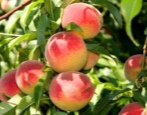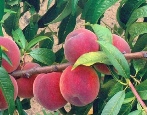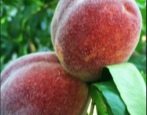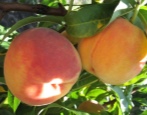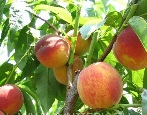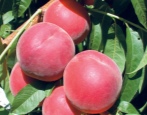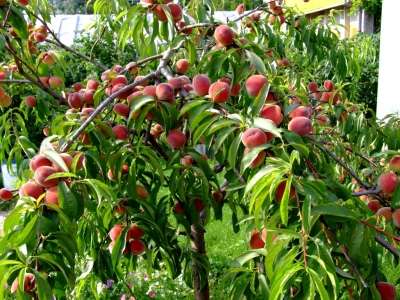
- Landing scheme: distance between plants 1.5-2 m
- Growth type: medium-sized
- Ripening period: mid-early
- Appointment: dining room
- Yield: high
- Transportability: medium
- Early maturity: for 3-4 years
- Bone size: small
- Separability of the bone from the pulp: not separable
- Winter hardiness: above average
Champion is a table peach variety that is highly frost-resistant and therefore suitable for growing in harsh climatic zones. The variety has been known since 1991 and during this time has gained widespread popularity in gardening circles.
Description of the variety
The champion is of an average type of growth, the tree reaches a height of 3-4 m; the crown is broadly oval, spreading, dense; flowers of medium size, formed in the form of large bowls, have bright pink petals.
Fruit characteristics
The peaches are medium in size and almost round in shape, their weight is about 150 g, a light fluff is observed on the yellow skin with a blush. The shelf life is limited to a week, the transportation rates are also average. For good marketability, fruits are stored in boxes and containers, and if the fruits are removed from the tree 5-7 days before full ripening, then they will more easily transfer transportation.
Taste qualities
The pulp of the fruit is juicy, tender, rich taste, dessert, is estimated at 4.7 points. These peaches are used both for fresh consumption and for making juice, nectar and various desserts. In addition, the Champion has a pronounced aroma, but cannot boast of a good separability of the pulp from the bone.
Ripening and fruiting
The Champion bears the first fruits 3-4 years after planting. It begins to bloom in May, and the harvest takes place in the second half of July, which is typical for mid-early varieties. Fruiting is regular.
Yield
Champion is a high-yielding variety that yields on average 60-70 kg of fruit per tree.
Growing and care
Prepare the land for planting in advance. To do this, organic matter and mineral compounds are introduced into the soil for digging, irrigate the ridge and dig a planting hole with a diameter and depth of 60-70 cm. The day before planting, hold the seedling in water, and treat the roots with antifungal agents. When planting, gently straighten the roots, plant the plant and fill the remaining space with the fertile mixture. After planting, water the area well and mulch the trunk circle with straw or wet sawdust. Leave a distance of 1.5-2 m between trees.
The variety belongs to self-pollinated varieties, and therefore does not need the neighborhood of other crops that act as pollinators. When caring for your crop, follow a few guidelines.
During the season, feed the tree 2-3 times: in the spring, add organic matter, and during the flowering and fruiting period, mineral compositions containing potassium and phosphorus are more suitable. The last time the plant is fertilized in the fall, in preparation for winter.
On average, the Champion variety is watered 2-3 times per season. The frequency depends on the climate where the plant is cultivated. So, in arid hot regions, the soil is moistened as the upper layer dries out, and in the middle lane they are guided by the amount and frequency of precipitation.
Perform sanitary pruning in the fall and spring. During this procedure, you need to eliminate all damaged, old, frozen branches.
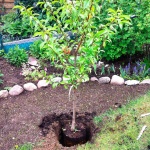
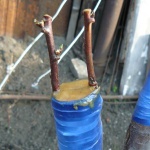
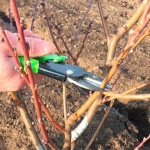
Frost resistance and the need for shelter
The champion is highly frost-resistant and is ready to withstand temperatures down to -30 degrees. The buds can withstand frosts down to -8 degrees, and blossoming flowers will not suffer at temperatures from zero degrees. Even if the tree gets damaged during the winter frosts, it will quickly recover in the spring.
Disease and pest resistance
Diseases and insects almost do not affect the Champion variety, but as a preventive measure, it will be useful to treat the plant with fungicides and insecticides in the spring, as well as remove weeds and carrion in time, and not ignore the timely application of fertilizers.
